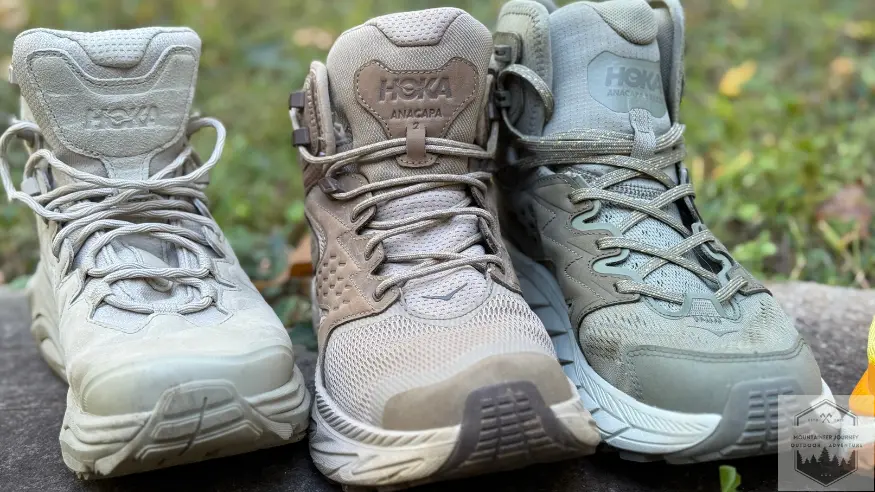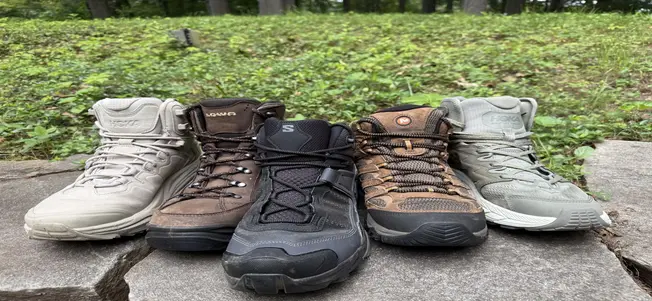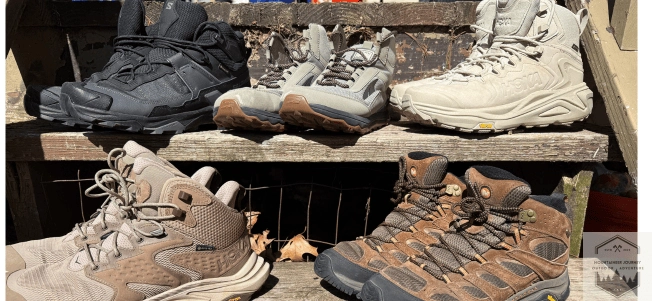Understanding Thru-Hiking | What Is a Thru Hiker?

A thru-hiker is someone who hikes an entire long-distance trail in one go, usually completing it within a single season.
This journey involves covering each mile of the trail without significant breaks, though short pauses for rest and resupply are common. In this article, we delve into what defines a thru hiker, highlight popular trails, and discuss the challenges and rewards that come with this adventurous pursuit.
Key Takeaways
- Thru-hiking entails completing a long-distance trail in a single continuous journey within one hiking season, focusing on the experience rather than campsite comfort.
- The journey of a thru-hiker can take several months and often involves daily distances of 10 to 25 miles, emphasizing both physical endurance and mental resilience.
- The thru-hiking community is characterized by strong social connections and support, often highlighted by acts of kindness known as ‘trail magic’, and unique traditions such as adopting trail names.
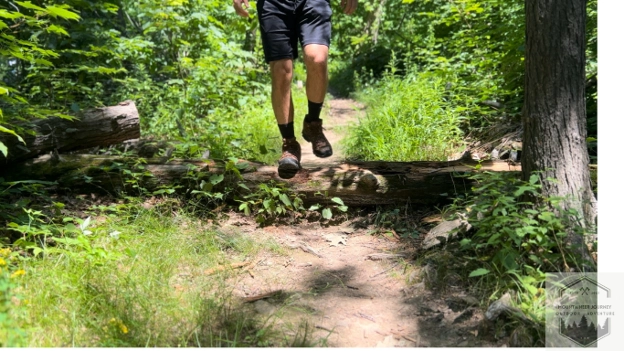
Thru Hiking
Thru hiking is the practice of trekking an entire trail from start to finish in one continuous hike, usually within a single season designated for hiking.
Thru hikes demands considerable dedication regarding both time and resources since completing such long backpacking trips can span from multiple weeks up to several months.
Thru hikers are expected to cover the full length of the trail without substantial interruptions or shifts in their trajectory, although brief deviations for purposes like restocking supplies or taking breaks are typically part of the experience, adding a distinct dimension to thru-hiking.
On average, hikers may cover daily distances between 10 and 25 miles depending on factors like personal fitness levels and terrain challenges associated with the trail. For those engaged in thru-hiking, it’s about fully embracing every step along their route rather than focusing solely on specific endpoints.

What is Thru-Hiking?
Thru hiking distinguishes itself from day hiking and regular backpacking in its unique approach. hikers are more concerned with traversing long distances on a trail rather than luxuriating at campsites, which is the opposite of what some prefer who focus on shorter hikes with well-appointed camp setups.
The goal for thru hikers is to efficiently complete their chosen trail within the confines of one single hiking season.
Undertaking such a challenge requires significant endurance, both physically and psychologically.
In contrast to section hikers who might spread out their journey across several outings, taking on different parts of the same trail, hikers strive to conquer the entire length all at once without breaks between sections. For a thru-hiker, this endeavor involves not just conquering miles, but also experiencing personal growth and change during their continuous trek.
Defining a Thru Hiker
A thru-hiker is someone who completes a long-distance trail in one continuous journey within a single season. This definition of a thru, while widely accepted, is subject to personal interpretation and can vary among hikers.
Some believe that to be a true thru-hiker, one must complete the trail without significant breaks or changes in direction. Regardless of these nuances, the essence of thru-hiking remains the same: it is about the journey and the perseverance required to see it through.
The term ‘thru-hiker’ encompasses a range of experiences and motivations. While some hikers focus on the physical challenge, others are driven by a desire for personal growth and a deeper connection with nature.
Hikers might temporarily leave the trail to restock supplies or take a brief respite, but they must complete the hike in one continuous journey.
This determined pursuit of the trail’s end fosters a unique sense of accomplishment and camaraderie among those who take on the challenge.
Popular Thru-Hiking Trails
Thru-hiking, an activity that captures the imagination of countless adventurers, is intimately connected with several globally famous long-distance paths. These esteemed trails—namely the Appalachian Trail (AT), Pacific Crest Trail (PCT), and Continental Divide Trail (CDT)—are collectively celebrated as the ‘Triple Crown’ of hiking.
Although in theory one could attempt to thru-hike any trail, these legendary routes are particularly magnetic, drawing throngs of hikers annually. Their allure stems from their breathtaking scenery, rigorous landscapes and the camaraderie among hikers they naturally nurture.

The Appalachian Trail (AT)
The AT, or Appalachian Trail, is an iconic path that weaves through diverse terrains across more than 2,000 miles from Georgia to Maine. It’s a mosaic of lush woods, gentle slopes, steep peaks, and scenic valleys. To traverse the entire trail requires a commitment of four to six months. On average, hikers take between five and eight months to complete this trail family endeavor.
What makes the Appalachian Trail particularly inviting is its open access. In contrast to some extended trails which require permits for passage throughout their length, the Appalachian Trail largely dispenses with such requirements—though special areas like Great Smoky Mountains National Park do enforce permit stipulations for overnight visits.
This ease of entry along with resources furnished by the Appalachian Trail Conservancy draws both beginners and seasoned hikers who aspire to embark on this popular route as thru-hikers.A study done in 2022 of Thru-hikers who attempted the Appalachian Trail spent about $10,000 on average.
The Pacific Crest Trail (PCT)
Spanning over 2,600 miles from Mexico to Canada, the PCT is a legendary combination of hiking trail sections that traverses an array of ecological zones. It passes through deserts, woods, and mountainous alpine terrain within California, Oregon, and Washington.
A significant feature of this trail is its elevation gain, which approaches nearly half a million feet—a daunting challenge for even seasoned hikers. Unlike the Appalachian trail which covers most of the east coast, the PCT only highlights 3 states.
To traverse the entirety of the PCT can take anywhere between five months to as much as seven months depending on how quickly one walks and prevailing conditions along the route.
Those planning to undertake this journey must prepare meticulously and secure necessary permits for specific stretches of the path. It rewards intrepid trekkers with stunning vistas across some of America’s most diverse landscapes.
The Continental Divide Trail (CDT)
The Continental Divide Trail (CDT) stands out as arguably the most demanding route among the Triple Crown trails, owing to its comparatively undeveloped and less clearly indicated routes.
Encompassing a span of 3,100 miles from Mexico all the way to Canada, this trail is an epic journey across continents.
As it weaves through the Rocky Mountains, hikers will traverse five states.
- New Mexico
- Colorado
- Wyoming
- Idaho
- Montana
Travelers are treated to some of North America’s rawest and most breathtaking landscapes on this path. It presents an authentic test of perseverance and adeptness due to its harsh terrain.
Completing thru hikes along the CDT usually requires a time investment ranging from five months up to seven months. This endeavor necessitates that trekkers secure several permits for various segments along their hike.
The requirement for specialized permissions like one issued by Blackfeet Nation Fish & Wildlife near Glacier National Park only adds layers of complexity and charm to traversing this trail.
These challenges notwithstanding, adventurous souls undeterred by rugged conditions find in the CDT an unmatched escapade awaiting them.
Life as a Thru Hiker
Existing as a hiker involves an unrelenting stride toward the subsequent trailhead, where enduring the journey’s physical rigors is counterbalanced by mental toughness. The stamina and resolve of thru hikers are put to the test through substantial bodily challenges such as injuries and blisters.
Yet, this path also provides opportunities for deep bonds with nature and fellowship among other hikers, which renders these difficulties meaningful.

Daily Routine
Typically, a thru hiker starts the day by breaking down their campsite and making sure that all of their equipment is sorted properly for the upcoming journey.
Throughout the course of each day, hikers trek anywhere from 10 to 25 miles, interspersed with intervals for relaxation, meals, and appreciating the natural surroundings. To maintain momentum on these long treks, many thru-hikers divide their route into smaller sections they can tackle progressively.
Despite how diligent they may be in organizing their packs at outset each morning, hikers often find it challenging to keep everything orderly during breaks when items tend to get mixed up.
The repeated pattern of packing up gear only to unpack and repack again becomes an integral part of what it means to engage in thru hiking. This rhythm underscores the need for methodical precision and self-discipline among those who hike extensively over time. Personally, I will unpack all of my gear the same way every single time to prevent disorganization. You need to know which hiking boots work best, for me the Salomon Quest 4 are built for thru-hiking.
My Experience
During my thru-hike on the Appalachian Trail, I developed a daily routine that began at dawn. I would wake up with the first light, carefully pack my gear, and make sure everything was in its designated place. This organization was crucial because, as the day progressed and fatigue set in, knowing exactly where each item was saved me a lot of time and frustration.
My average day involved hiking about 15 miles, with breaks for snacks and to enjoy the breathtaking views. One memorable moment was when I reached McAfee Knob, a popular spot on the trail with a stunning panoramic view.
It was a tough climb, but standing there made all the effort worth it. Every evening, I would set up my tent, cook a simple meal, and reflect on the day’s journey before falling asleep under the stars. This routine became a comforting rhythm that would get me ready as I start on my trail head.
Physical Challenges
Thru-hikers undertaking trails must navigate an array of physical difficulties that can interfere with the completion of their hike. Commonly, they contend with persistent blisters until reaching a point about 500 miles into the journey.
Conditions such as plantar fasciitis and Achilles tendonitis are widespread among those on a thru hike, necessitating attentive care to manage and at times causing hikers to abandon their trek.
These adventurers may confront other grave threats like Lyme disease or altitude sickness when hiking specific routes like the CDT.
The initial weeks on trail tend to be exceptionally taxing physically as one’s body adjusts to the strenuous requirements of continuous hiking over extended distances. It takes a mix of resilience, thorough preparation, and sometimes plain stubbornness for hikers to overcome such adversities during a thru hike.
Mental Challenges
The experience of thru-hiking is not just physically demanding, but also mentally taxing. Solo hikers embarking on these extensive trails often face internal battles with loneliness and significant self-doubt throughout their trek.
It’s imperative for hikers to be psychologically prepared in order to cope with these mental obstacles and keep a steady mind while hiking.
When the journey reaches its end, it isn’t uncommon for thru hikers to feel an emotional cocktail of happiness paired with sadness due to feeling out of touch with their previous way of life and struggling with a newfound sense of purposelessness.
This sensation often referred to as post-hike blues, highlights the necessity for strong mental resilience both during the hike itself and in adapting afterwards.
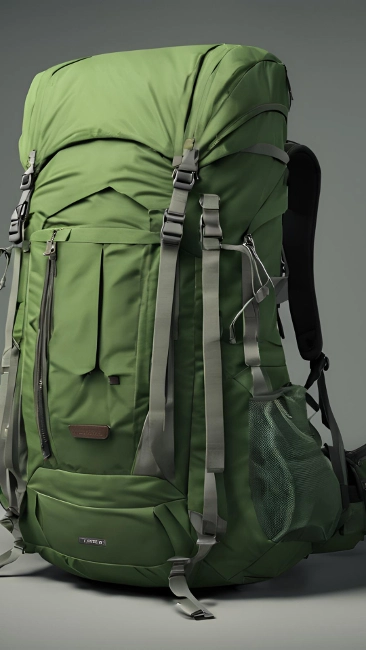
Essential Gear for Thru Hikers
Outfitting for a thru hike necessitates selecting gear that is both light and practical, aiming to improve comfort and safety during the journey. Optimal equipment plays a crucial role in ensuring a successful trek as opposed to having to abandon it prematurely because of pain or harm.
Footwear and Clothing
Selecting the right footwear is a key decision for thru hikers. Many opt for trail runners instead of classic hiking boots as they offer reduced weight and increased comfort, thereby lessening the likelihood of blisters and injuries. It’s equally important to employ effective layering techniques that enable hikers to adjust to variable climatic conditions along their hike.
For clothing, it’s vital for hikers on the trail to choose garments made from moisture-wicking fabrics. These materials are indispensable in maintaining dryness and comfort when facing diverse weather patterns.
The use of apparel that is both lightweight and quick-drying especially in the summer can also be beneficial in keeping hikers at ease while preventing chafing and related skin issues.
Shelter and Sleeping Systems
For thru hikers, having the right shelter and systems for sleeping is critical. Many opt for ultralight tents that offer sufficient shelter without weighing down their backpacks too much. To stay comfortable during chilly nights on the trail, compact and warm sleeping bags are indispensable.
Securing a restful sleep to sustain energy throughout thru hikes means that selecting sleeping pads with good insulation and cushioning is imperative. With these gear pieces, hikers can rejuvenate properly each night in preparation for what lies ahead on the trail come morning.
Food and Water Management
Efficiently handling food and water is crucial for thru-hiking. Thru-hikers often strategize their journey by sending food parcels to designated resupply points or purchasing sustenance en route. For efficiency and nutrition, energy bars and protein shakes are popular choices among these hikers due to their ease of consumption.
Maintaining proper hydration is equally important, prompting hikers to equip themselves with water filters or purification tablets for safe drinking water.
To effectively address hydration needs without significantly increasing pack weight, many turn to using reservoirs or foldable bottles that allow them to transport an adequate amount of water throughout the hike.

The Thru-Hiking Community
Most thru hikers are passionate about end to end hiking, make up the lively and encouraging thru-hiking community.
The bonds that hikers create while on these trails can be exceptionally deep, outstripping ordinary relationships as a result of their common struggles and adventures.

Trail Angels and Magic
During their trek, thru hikers tend to encounter trail magic – unexpected gestures of generosity that significantly lift their mood and motivate them. These can include anything from snacks and beverages to transportation services or a place to stay, courtesy of trail angels who extend these kindnesses simply out of benevolence.
Trail magic plays a critical role in the experiences of thru-hikers on the trail. Stumbling upon a cooler filled with sodas at an isolated road junction or being treated to a warm meal after miles of hiking brings immense relief and joy, reinforcing morale through gentle reminders about the compassion inherent in human nature.
Trail Names
Hikers adopt trail names that symbolize their individual evolution and the sense of fellowship experienced during a hike. While these monikers are typically bestowed by other hikers, they can be altered at the discretion of the individual. Opting for a trail name is voluntary. It stands as an endearing tradition within the thru-hiking community.
The phrase ‘Hike your own hike’ captures the essence of thru hiking, promoting independence and personal engagement with one’s journey on the trail. The adoption of trail names supports this principle by reinforcing both uniqueness among hikers and solidarity amongst peers in the hiking realm.
Planning Your First Thru Hike
Preparing for a thru-hike necessitates detailed organization and study. It is crucial to be well-informed about the trail specifics, acquire necessary permits, and plan finances effectively to ensure your expedition is fruitful.
In this portion, we will provide you with essential instructions on how to proceed with arranging your inaugural thru-hike.
Research and Permits
Securing the necessary permits and conducting extensive research is absolutely essential when preparing for a thru hike. It’s advisable to start planning no less than eight months in advance, giving ample time to become acquainted with all of the unique demands and regulations associated with your selected trail, including permit processes. This precautionary step helps circumvent any potential legal or logistical obstacles.
Investing more time into the planning stages than you anticipate spending on the actual hiking portion can significantly enhance your experience.
A meticulous plan addressing everything from choosing appropriate gear to mapping out routes and readying for emergencies boosts your chances of not only successfully completing but also thoroughly enjoying your thru-hiking adventure.
Budgeting and Finances
Preparing financially for a thru-hike requires consideration of several costs, such as equipment, nourishment, authorization fees, and unanticipated expenditures.
Typically, hikers might spend around $1 per mile during their hike. Hence the entire expedition could amount to more than $9,000. Proper research and strategic preparation are crucial in navigating these economic hurdles.
Significant expenses arise from procuring initial gear that is both light and robust as well as covering continuous food supply needs. Budgeting for occasional town visits—for accommodations or dining—can greatly influence total spending.
Hikers who meticulously oversee their finances by allocating adequate reserves can facilitate a more even-paced adventure.
Training and Preparation
Building endurance through physical conditioning is crucial for successfully completing a end to end hike. Engaging in consistent cardiovascular and strength training exercises primes the body to handle the rigors of thru hiking.
Including practice hikes in your workout plan also offers an opportunity to evaluate gear requirements while enhancing endurance tailored specifically for hiking. In this phase, you will begin to know your body.
For first time thru hikers, embarking on shorter trails like the Long Trail or Pinhoti Trail can serve as valuable preliminary steps.
These trails offer a less daunting introduction to long trail experiences and help hikers learn important aspects such as pace setting, equipment selection, and psychological toughness before attempting a more extensive thru-hike. However, in the end nothing will fully prepare you for thru hiking other than doing it.
Frequently Asked Questions
How hard is thru-hiking?
Thru-hiking can be very hard, the rigorous nature of thru-hiking, with its extensive stretches traversed across challenging landscapes, often results in exhaustion and potential injuries.
Thus, it becomes crucial to remain attentive to the demands of one’s body while undertaking such a hike.
What is the difference between thru-hiking and section hiking?
Traversing a trail from start to finish in one continuous trek is known as thru-hiking, while section hiking involves completing the entire length of the trail by undertaking various segments during different trips.
How long does it typically take to complete a thru-hike?
A thru hike on trails like the Pacific Crest Trail or the Appalachian Trail can span from four to eight months. This duration affords hikers the opportunity to thoroughly immerse themselves in the beauty and rigors of trail hiking.
What are trail angels and trail magic?
Individuals known as trail angels offer support and kindness to hikers on the trail, often delivering what’s termed as trail magic, such as supplying snacks, beverages, or rides.
Adventure Awaits,
Tyler



